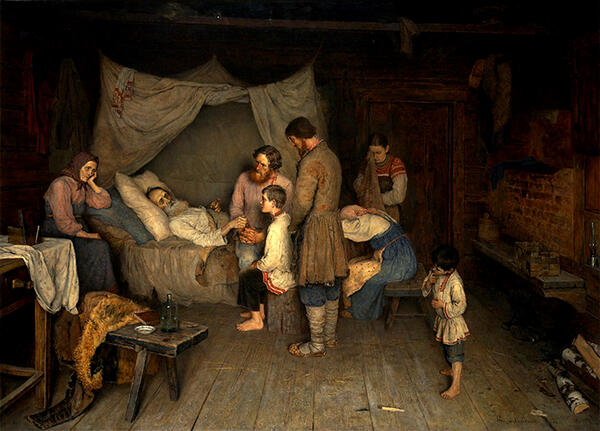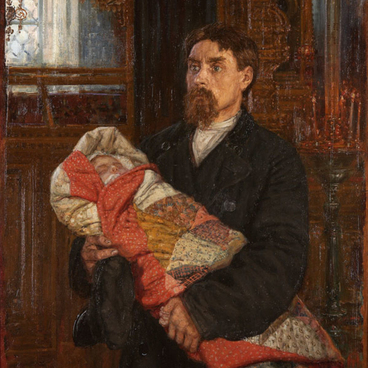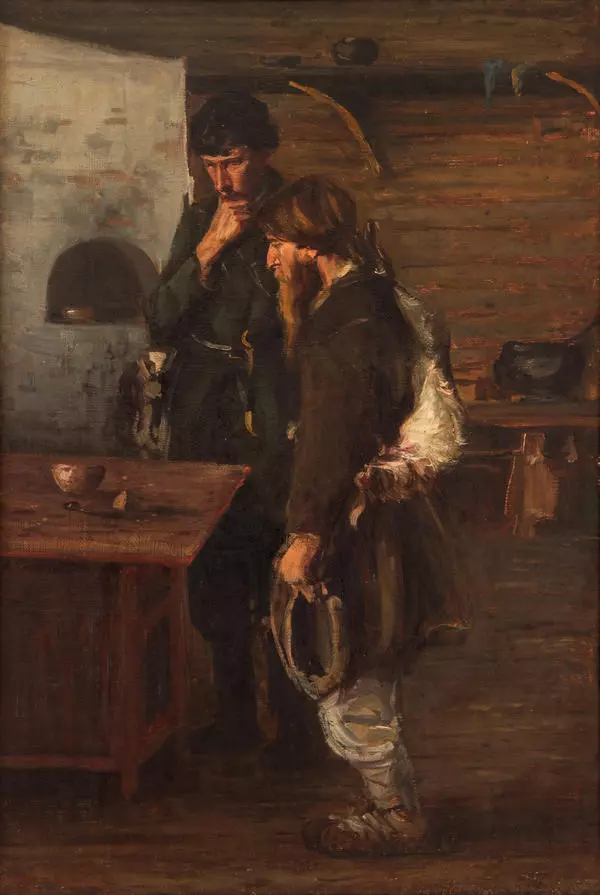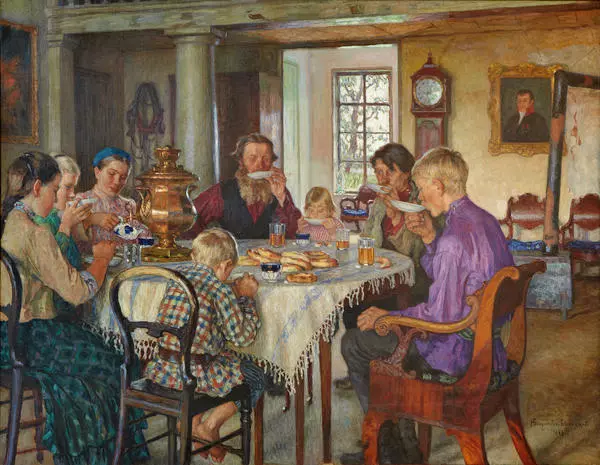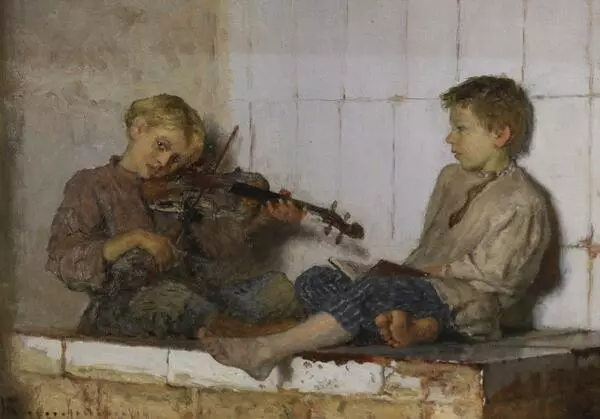An artist who knew firsthand about the way of life and traditions of the Russian peasantry created the genre painting ‘The Last Will’. Nikolay Bogdanov-Belsky (December 20, 1868 - February 19, 1945) was the illegitimate son of a farm laborer, and at baptism was recorded as Bogdanov, i.e. ‘God given’. He later added ‘Belsky’ to his surname, signifying the name of his native district. (According to another version, the ‘noble’ addition ‘Belsky’ was inscribed in his diploma by Emperor Nicholas II).
‘I spent so many years in the village, I was so close to the village school, I watched peasant children so often, I loved them so much for their spontaneity and talent that they became the protagonists of my paintings, ” wrote Nikolay Bogdanov-Belsky.
“The Last Will” contains important themes for the artist. A grieving family gathered around a dying old man is the semantic center of the painting. His image is almost monochrome, his appearance is deprived of life, and the dress and the curtain of the bed are painted in soft beige tones. The clothes of the relatives mourning him are depicted differently, in pastel and dark muted shades. The world of a dying person seems to contrast with the world of the living. This is also emphasized by the light and shadow accents of the exposition.
At the same time, there is the carefully painted figure of a boy in the foreground of the painting. The artist deliberately splits the child’s figure, located to his right, showing different stages of a person’s life. Its beginning embodies the world of childhood untouched by sorrows, the end is grief and mourning for loved ones. The boy’s pose, the position of the head and his sincere curiosity are contrasted with the central scene, the irreparability of which is still unknown to the child.
The master’s canvas “The Last Will” is a true pearl of the unique collection of the Taganrog Art Museum, with its own amazing history. The painting was added to the collection of the city museum in 1920, during the artist’s lifetime. During the occupation of Taganrog during World War II, the art department of the museum suffered significant losses, having lost about 50 unique paintings. Among the lost paintings was ‘The Last Will’.
At the beginning of this century, the canvas was discovered in a private German collection. The collector himself bought it at a Christie’s auction in London in 2001. As a result of negotiations held with the owner of the Federal Service for Supervision of Mass Communications and the Protection of Cultural Heritage, and with the assistance of the Pipe Metallurgical Company, which bought the painting, it was delivered to Russia and transferred to the museum in October 2008. The ceremony of presentation of the work to the Taganrog Art Museum was attended by the Minister of Culture of the Russian Federation Alexander Avdeev, who today is the Ambassador of the Russian Federation in the Vatican.
‘I spent so many years in the village, I was so close to the village school, I watched peasant children so often, I loved them so much for their spontaneity and talent that they became the protagonists of my paintings, ” wrote Nikolay Bogdanov-Belsky.
“The Last Will” contains important themes for the artist. A grieving family gathered around a dying old man is the semantic center of the painting. His image is almost monochrome, his appearance is deprived of life, and the dress and the curtain of the bed are painted in soft beige tones. The clothes of the relatives mourning him are depicted differently, in pastel and dark muted shades. The world of a dying person seems to contrast with the world of the living. This is also emphasized by the light and shadow accents of the exposition.
At the same time, there is the carefully painted figure of a boy in the foreground of the painting. The artist deliberately splits the child’s figure, located to his right, showing different stages of a person’s life. Its beginning embodies the world of childhood untouched by sorrows, the end is grief and mourning for loved ones. The boy’s pose, the position of the head and his sincere curiosity are contrasted with the central scene, the irreparability of which is still unknown to the child.
The master’s canvas “The Last Will” is a true pearl of the unique collection of the Taganrog Art Museum, with its own amazing history. The painting was added to the collection of the city museum in 1920, during the artist’s lifetime. During the occupation of Taganrog during World War II, the art department of the museum suffered significant losses, having lost about 50 unique paintings. Among the lost paintings was ‘The Last Will’.
At the beginning of this century, the canvas was discovered in a private German collection. The collector himself bought it at a Christie’s auction in London in 2001. As a result of negotiations held with the owner of the Federal Service for Supervision of Mass Communications and the Protection of Cultural Heritage, and with the assistance of the Pipe Metallurgical Company, which bought the painting, it was delivered to Russia and transferred to the museum in October 2008. The ceremony of presentation of the work to the Taganrog Art Museum was attended by the Minister of Culture of the Russian Federation Alexander Avdeev, who today is the Ambassador of the Russian Federation in the Vatican.

